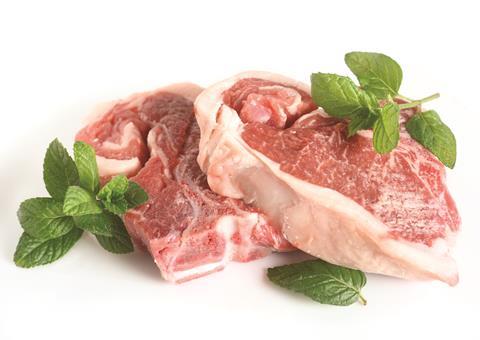There are many hurdles facing UK meat exports over the coming year, our latest report finds.
Cost-of-living concerns and pressures on disposable incomes have affected the whole world in 2023, with consumers often trading down and price competition fiercer than ever. Thus, UK exporters have faced a highly challenging time, particularly outside Europe and supplies have been a constraint. We review here the factors at play and highlight some successes.
The big picture
In 2023, the food and drink trade gap increased against 2022 with exports falling by 2% to £24.3 billion and imports rising by 5.1% to £60.4 billion. Southern and Central America, and Oceania were the worst performing areas, down respectively 29.3% and 15.5% in value. In contrast, imports from New Zealand and Australia increased as a result to the two FTAs recently negotiated with beef imports from Australia up 58.4% in volume. Further expansion of Australian beef imports is expected in 2024.
Shipments of food and drink to the EU increased their share to 61.3% of total UK exports, with sales up 1.3% whilst non-EU exports fell by 6%. In the last eight years since the referendum to leave the EU, the share of British exports to Continental Europe and Ireland has risen. The proposition and price level of British food and drink are more attuned to the EU, Norway and Switzerland than further afield markets in Asia or North America. Distance also remains an important factor of trade intensity. These observations are not new, but numbers do not lie.
Lamb the star performer
Declining production in Europe, with self-sufficiency due to fall to 87% in 2024 and production diminish by 6.9%, means a massive opportunity for UK sheep meat this year. EU imports are due to rise to 178,000 tonnes and the UK is best placed to fill the gap. For instance, the UK represented 54.3% of total EU sheep meat imports in 2023, up from 51.6% in 2022 with sheep meat the only major meat species where the EU has a deficit. However, with the Governments of England, Scotland and Wales openly discouraging food production and a decline of livestock numbers, British farmers and processors may not be able to seize this great opportunity.

Recent figures from the European Commission highlight the progression of UK sheep meat exports to the EU, which is expected to rise further in 2024. Even better news, product shortage means that importers have accepted the higher prices despite strong consumer resistance. Data for January and February 2024 shows even more progress with total volume up 8% and value up 20.2%.
The rise of the price of sheep meat in the UK has led to a fall of non-EU exports as the product has become less competitive, meaning that nearly 94% of British sheep meat (in value) was shipped to the EU in 2023, a far cry from the claims heard the last seven years of potential of non-EU exports.
Last year, the UK exported 90,201 tonnes of sheep meat and imported 55,726 tonnes, mainly of frozen lamb.
In total, the UK exported £562 million worth of lamb and mutton in 2023, a vital outlet for British farmers and processors as well as the whole rural economy and structure. Last year, the UK exported 90,201 tonnes of sheep meat and imported 55,726 tonnes, mainly of frozen lamb.
On the negative side, the continued dominance of the carcase trade and a lack of differentiation limits the creation of added value.
Beef export fall back
According to HMRC, the UK exported 134,000 tonnes of beef in 2023, down 15% on 2022, mainly due to lower supplies and subdued demand. The average export price for all beef products fell by 14% in 2023.
In total, the value of UK beef exports fell to £563 million in 2023. The EU share of the trade progressed to 89.3%. Chilled beef ‘technical’ cuts continue to account for the majority of the trade. The value of offal, hides, skins and co-products fell or remained at a low ebb in 2023.

Pork supplies the limiting factor
According to HMRC, in 2023, the UK exported 298,312 tonnes of pig meat worth £570 million, a fall of 20% against 2022 fully attributable to lower pig supplies and high UK prices. For memory, the UK exported 400,000 tonnes of pig meat in 2020. EU exports fell but the destinations still represent 49.8% of the total.
Recent data from AHDB highlights the importance of offal exports, with Chinese and Far-Eastern demand resilient unlike for frozen pork. At 781,000 tonnes, imports of pig meat were back 2.5% in 2023 against 2022 due to lower bacon shipments.
UK poultry for Japan?
The opening of the Japanese market to UK cooked poultry meat in November is good news but this should be kept in perspective. Only one processor, Moy Park in Grantham, is listed and the Government estimates that this trade could be worth £2 million per year. The UK had prior access to Japan for raw and cooked poultry since 2021; however, outbreaks of avian influenza led to an interruption of trade.
UK poultry exports remain small and mainly consist of low value cuts destined to markets in sub-Saharan Africa.
The rise of salmonella cases involving Polish poultry in 2023 highlighted by the Food Standards Agency has not affected the level of imports. Meanwhile, Ukrainian poultry giant MHP is targeting the UK for expansion. It is pitching itself as a competitor to Thai and Brazilian frozen chicken, with an offer ranging from raw chicken and meat ingredients to added value cooked and coated products.
Hurdles to overcome
Trade should flow freely, a tall order with meat, a commodity burdened with complex sanitary rules. The current difficulties of access to the vast EU market are deterring small and medium size meat processors from exporting, despite some valiant efforts as seen at the Anuga fair in Cologne last autumn.
The high cost of the new border checks estimated at £2 billion… will disproportionally affect meat, meat preparations and other livestock products.
Importers are also feeling dejected with the high cost of the new border checks estimated at £2 billion by Allianz Trade. This burden will disproportionally affect meat, meat preparations and other livestock products. In contrast, last October, the Government estimated that the additional checks would cost businesses an extra £330 million a year, and add less than 0.2 percentage points to food inflation over three years.
Here’s a wish list from meat traders and their representative organisations:
- Negotiate (the overdue) veterinary equivalence with the EU
- Simplify trade rules with the EU and lower trading costs
- Address the shortage of official veterinarians in trade roles
- Improve the IT systems for Third Country exports
- Take UK internal politics out of technical and trade discussions
- Address the imbalance in Government and agencies activities in the development of Third Country exports against EU trade, still by far the largest market for British food.

The positive contribution of the agri-food attachés in 2023 should continue in 2024. Their role is strategic at a time when commerce with Third Countries is highly challenging.
Last but not least, the appointment of Richard Hampton as director for international trade development at AHDB is of key importance. He has an enviable export experience with Omsco, the organic dairy co-operative, but will need to rapidly grasp the specificities and intricacies of meat exports. The British Meat Processors Association said: “Developing international trade for British meat is a role that demands a deep knowledge of the industry to facilitate technical solutions and export approval. It requires close working relationships with producers, processors, UK Government departments and their overseas equivalents”. I must add from personal experience that he will need to demonstrate assertiveness in his dealings with Government departments and the many stakeholders in the sector.
















